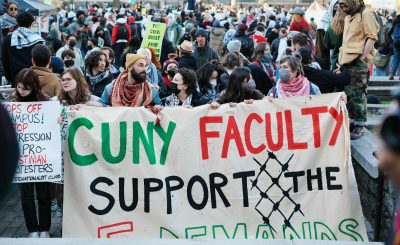By Tahreem Ashraf
The largest and most diverse donor registry in the world, Be The Match Foundation is operated by the National Marrow Donor Program, with a life saving aim to provide an opportunity to the patients diagnosed with rare blood cancers like leukemia and lymphoma to receive the marrow or umbilical cord blood transplant when necessary. A change in a patient’s DNA results in the damaging growth of cancer cells which are killed with chemotherapy and healthy donor cells are introduced to the body so the patients starts producing them on their again.

Human leukocyte antigen (HLA) matching is used to match patients and donors who share the same HLA type. Siblings have 25% chances of match and people with the same ethnic background and ancestry are more likely to match, but the in some cases match is hard to find as some HLA types are not common and therefore, African American, Hispanic and Asian people have a lower chances of finding a match.
For fiscal year 2020 (October 1, 2019 to September 30, 2020,) 148 community engagement representatives across the country recruited 356,921 potential donors to the Be The Match Registry. Most of those 148 community engagement representatives don’t work directly for Be The Match, but other nonprofits including The Icla da Silva Foundation, who serve as network partners for Be The Match. The Foundation is more focused in recruiting African American, Hispanic and Asian donors because of the disparity in outcomes through the strategy of paid advertising, social media marketing, earned coverage of patient stories in local and national media, and the mobilization of community engagement representatives like myself to organize recruitment drives and create community partnerships. As Be The Match is also stretching towarrds college campuses, Andres Lopez who works for The Icla da Silva Foundation, is assigned to be the community engagement representative for Be The Match at Queensborough Community College, LaGuardia Community College and Pace University.
According to Lopez, from October 1, 2019 to September 30, 2020, 63 on the Queensborough Community College and 202 students at LaGuardia Community College Campus signed up for Be The Match through class presentations, partnerships with student clubs and campus outreach. “I was able to recruit 66 students at Pace University. What is special about Pace University is that a student was called by Be The Match because he came up as a match for a patient. He is a member of the Pace University football team.†He further stated. “They told me I could possibly save the life of a 57-year-old leukemia patient,†said Miles Mendez, a freshman at Pace University whose HLA matchted with a women suffering from leukemia.
“I worked with a mother of three living in the Bronx who fought leukemia for more than a decade. Jennifer Maria didn’t have anyone in her family who was a match and we didn’t find a match for her on the Be The Match Registry. She died in December and I’m still processing the feeling that I failed her by not successfully helping to find her match.â€said Lopez who want everyone to sign up for Be The Match so there won’t be another patient dying hopelessly.
There are many myths and false beliefs about the donation process which are far from the truth. The vast majority of donors say it was worth it to help save a life, and they would do it again. Most blood stem cell donors give peripheral blood stem cells, which is a nonsurgical procedure and the most common way to donate. On thenother hand, bone marrow procedure is a surgical, usually outpatient procedure. The patient will receive anesthesia and feel no pain during the donation. Doctors use a needle to withdraw liquid marrow from the back of your pelvic bone via two small punctures.There are few risks of donating as donor’s immune system stays strong and there are rarely any long term side effects. Only 1 to 5% or less of your marrow is needed to save the patient’s life every precaution is taken to ensure the safety and well-being of the donor.
According to Lopez, “We are able to see how many students sign up for Be The Match at each college because we use unique signup links and text-to-join codes for people to sign up for Be The Match.†You can sign up on the Be The Match website or text “QCC†at 61474 to create an account and enter basic health information about yourself, and you can either complete a swab kit (which will undergo HLA typing) at a Be The Match recruitment event or you can order their swab kit sent to you home. Only 1 in 430 people who sign up can be the potentioal donor and the patient’s insurance covers the cost of the transplant. “I believe Queensborough Community College, along with LaGuardia Community College and Pace University, are special places. Students at Queensborough are future leaders in their fields and often very interested in exemplifying the college’s mission to support critical thinking, intellectual inquiry, global awareness, civic responsibility, and cultural and artistic appreciation.†Said Lopez. He also believes that his motive serves the interest of raising awareness on campus, the administration, faculty and students at Queensborough and embrace the mission of helping patients fighting blood cancers and other life-threatening blood diseases.




